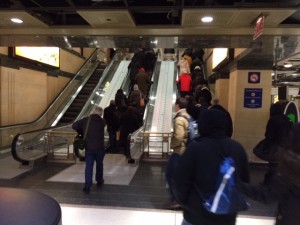 Guest commentary: Union Station is key element in Crossrail plan for unified, regional rail service
Guest commentary: Union Station is key element in Crossrail plan for unified, regional rail service
By Alan Mammoser
Historic Union Station, with grand columns and Great Hall, stands solemnly in the West Loop as is has for nearly a century. But the old station is in the news a lot lately. Recently, Amtrak and Mayor Emanuel announced a $1 billion plan to redevelop this relic of railroading’s golden age. They foresee a new hotel and condos atop the Great Hall, and new towers on adjacent blocks.
It’s an impressive plan that should generate revenue for the city and Amtrak. But it misses the big picture. The big picture for Union Station is much more than a real estate deal. The big picture includes not just the Great Hall but extends across Canal Street to the Concourse. It’s there, in the tracks beneath a nondescript 1960s-era office tower, that the key to revolutionizing Chicago-area transit lay.
Any plan to enhance Union Station’s real estate values should also recognize that its redevelopment can transform Chicago-area transit. Done properly, this plan will give Chicago a world class rail system, one fit for a global city. Done improperly, it could compromise the irreplaceable transportation jewel that Union Station is.
The plan announced in May shows no sense of the need to upgrade the rail network beneath the streets, where Amtrak and Metra face limited space to serve a growing ridership. Worse, its massive scale actually threatens future transit improvements, because its big towers sit directly…

